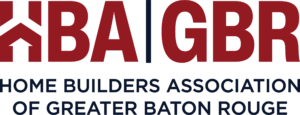Increased levels of new home construction and sales are leading some buyers to expect the home search to get easier in the months ahead. According to the latest Housing Trends Report for the second quarter of 2023, 29% of prospective buyers are anticipating housing availability to ease up ahead, an improvement over the 24% and 26% who had similar expectations… Read More ›
The Federal Reserve’s monetary policy committee increased the federal funds rate to a top target of 5.5% at the conclusion of its July meeting. The Fed will also continue to reduce its balance sheet holdings of Treasuries and mortgage-backed securities as part of quantitative tightening. These actions are intended to slow the economy and bring inflation back to 2%. After… Read More ›
Mortgage rates’ slow –but steady– march upwards combined with the return of home price gains are doing what they are predicted to: slow housing demand. According to the latest Housing Trends Report, the share of adults with plans to purchase a home within a year dropped to 15% in the second quarter of 2023, down from a record high of… Read More ›
Over the first five months of 2023, the total number of single-family permits issued year-to-date (YTD) nationwide reached 357,143. On a year-over-year (YoY) basis, this is 24.7% below the May 2022 level of 473,997. Year-to-date ending in May, single-family permits declined in all four regions. The Northeast posted the lowest decline of 14.7%, while the West region reported the steepest… Read More ›
Job gains slowed in June, but the labor market remained solid. Total payroll employment rose by 209,000 and the unemployment rate decreased to 3.6%. In June, wages grew at a 4.4% year-over-year growth rate, down 1.1 percentage points from a 5.5% gain in May 2022. Total nonfarm payroll employment increased by 209,000 in June, following a gain of 306,000 in… Read More ›
Average hourly earnings for residential building workers* rose at a slower pace in May, after more than a year of strong gains. Wage growth has retreated below or close to 3%, from the peak rate of 2021. According to the Bureau of Labor Statistics (BLS) report, average hourly earnings (AHE) for residential building workers were $29.87 in May 2023, increasing… Read More ›








